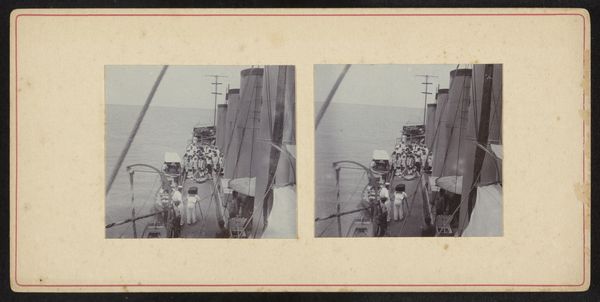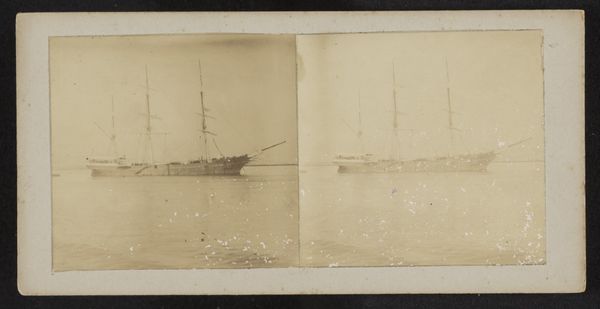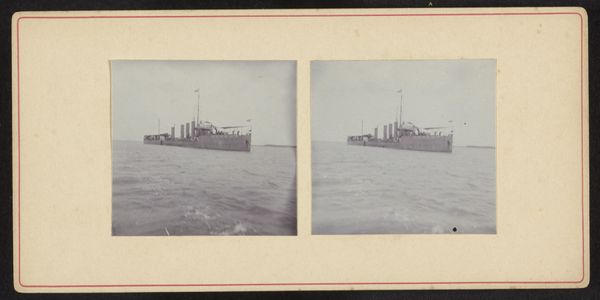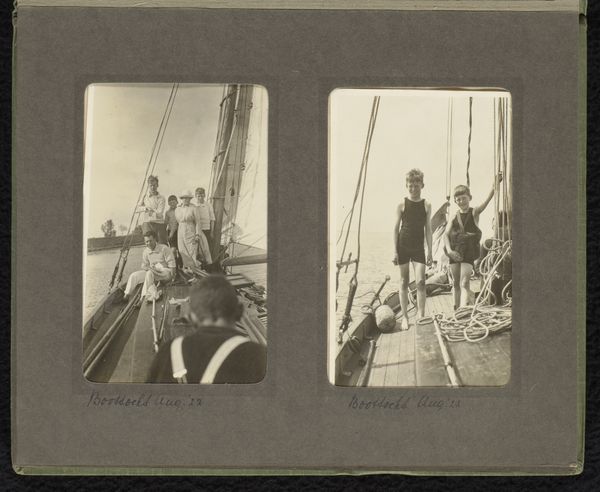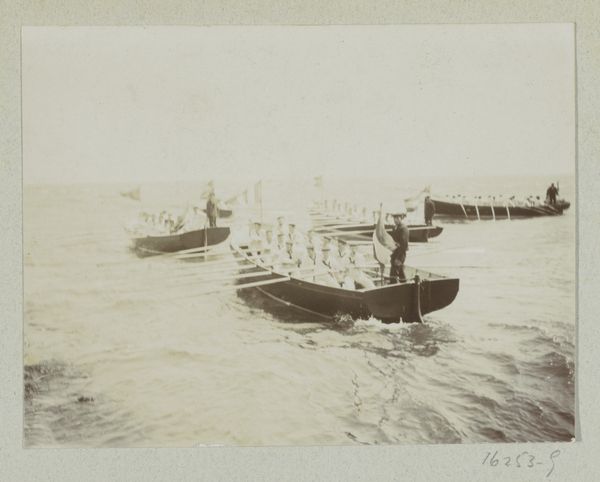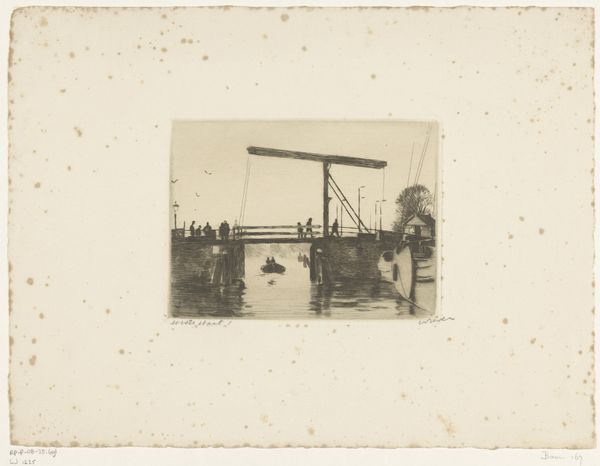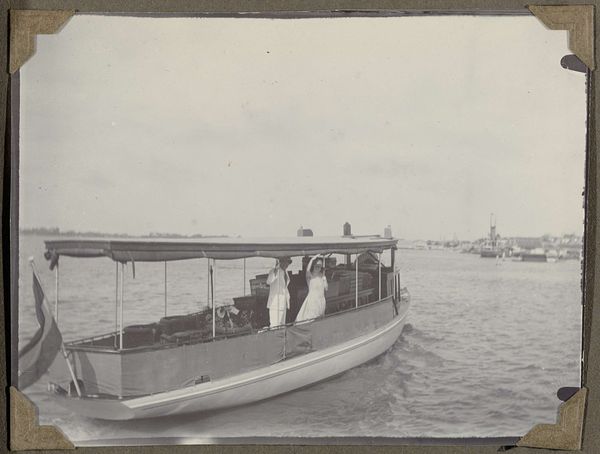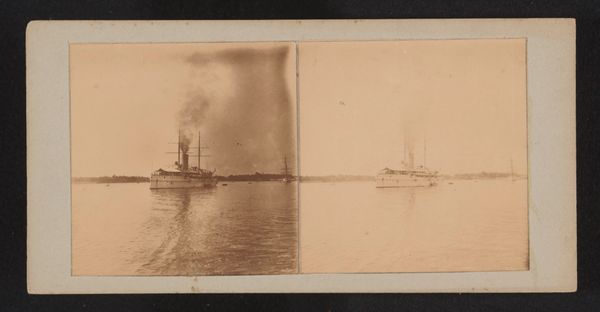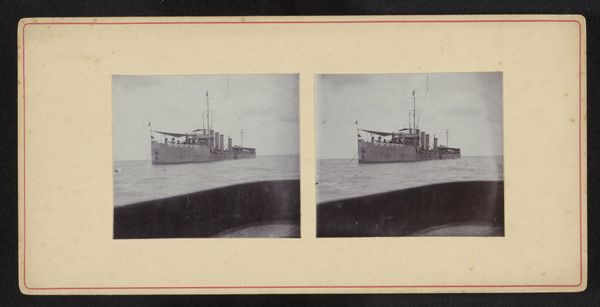
print, photography, gelatin-silver-print
#
portrait
# print
#
landscape
#
photography
#
gelatin-silver-print
#
realism
Dimensions: height 55 mm, width 57 mm, height 88 mm, width 178 mm
Copyright: Rijks Museum: Open Domain
Curator: Here we have Robert Julius Boers’ photograph, titled “In de haven,” created sometime between 1900 and 1922. It’s a gelatin-silver print currently held at the Rijksmuseum. My initial reaction is one of subdued stillness. It's not a dynamic composition. Editor: There’s a definite somber mood to it, isn't there? Those figures on the bench, gazing out... They immediately reminded me of classic tropes of melancholy, figures lost in thought by the sea, contemplating journeys and distances. What do we know about the image’s creation? Curator: Boers, about whom much is still unknown, was clearly working within the conventions of pictorialism but his choice of gelatin silver points toward the mass reproducibility that would allow the photograph to exist not just as a piece of art, but also a readily available document for circulation and exchange. That suggests he envisioned the work reaching a wider audience, not only as an artwork but as a functional item. Editor: And that act of photographic recording gains further layers of meaning. A harbor always implies passage, transition. Are those naval officers? It seems a world of imperial ambition, of trade and transportation of both goods and perhaps, people too? The visual layering here – men overlooking ships sailing to ambiguous locations – sparks stories of both individual and collective experiences of migration, and the sheer mechanics and logistics required to organize them. Curator: Precisely! These materials situate it in the turn of the century moment of global shipping and increased manufacturing. One might even consider this piece as one element amongst the larger production chain, reflecting back onto it, documenting and ultimately serving the needs of this industry. Editor: I see the human element woven inextricably with larger narratives. Those uniforms are signs of power, a symbol of empire made material. However, I also see the figures seemingly dwarfed in the distance, and against a flat, somewhat oppressively overcast sky. Boers really does create a stage on which the dance of history and personal feeling play out. Curator: Indeed. Boers shows that to think through the industrial shifts also forces consideration of what the human reaction might be within the industrializing system. The photograph freezes a transient historical situation. It reveals and complicates our comprehension of progress and the human situation. Editor: Well, by looking at the men through symbolic lens, and with you examining its industrial and production-focused making, we understand the image presents this critical time.
Comments
No comments
Be the first to comment and join the conversation on the ultimate creative platform.
